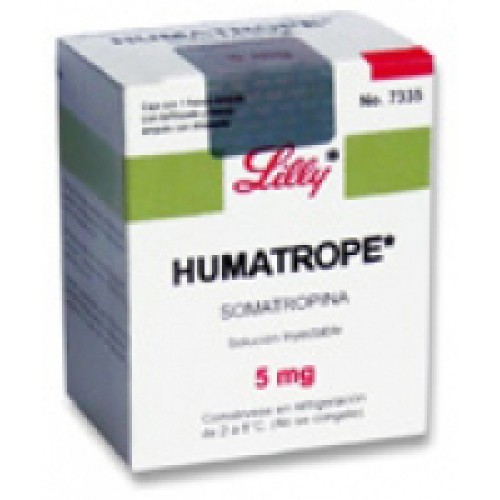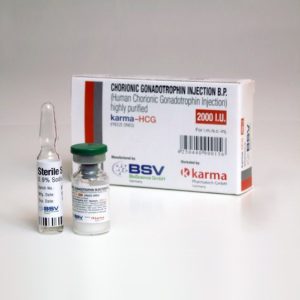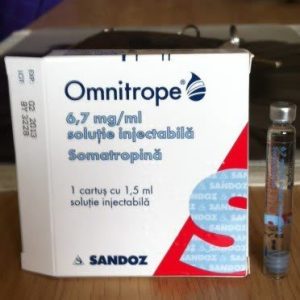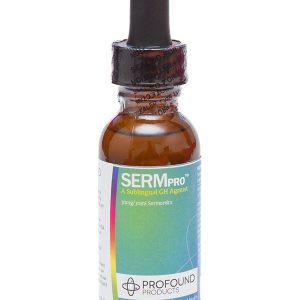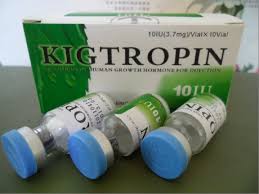$300.00
Description
Brand Name: HUMATROPE
Generic Name: Somatropin
Humatrope Description
Humatrope® (Somatropin, rDNA Origin, for Injection) is a polypeptide hormone of recombinant DNA origin. Humatrope has 191 amino acid residues and a molecular weight of about 22,125 daltons. The amino acid sequence of the product is identical to that of human growth hormone of pituitary origin. Humatrope is synthesized in a strain of Escherichia coli that has been modified by the addition of the gene for human growth hormone.
Humatrope is a sterile, white, lyophilized powder intended for subcutaneous or intramuscular administration after reconstitution. Humatrope is a highly purified preparation. Phosphoric acid and/or sodium hydroxide may have been added to adjust the pH. Reconstituted solutions have a pH of approximately 7.5. This product is oxygen sensitive.
VIAL — Each vial of Humatrope contains 5 mg somatropin (15 IU or 225 nanomoles); 25 mg mannitol; 5 mg glycine; and 1.13 mg dibasic sodium phosphate. Each vial is supplied in a combination package with an accompanying 5–mL vial of diluting solution. The diluent contains Water for Injection with 0.3% Metacresol as a preservative and 1.7% glycerin.
Humatrope Somatrem and somatropin are man-made versions of human growth hormone. Growth hormone is naturally produced by the pituitary gland and is necessary to stimulate growth in children. Man-made growth hormone may be used in children who have certain conditions that cause failure to grow normally. These conditions include growth hormone deficiency (inability to produce enough growth hormone), kidney disease, Prader-Willi Syndrome (PWS), and Turner’s syndrome. Growth hormone is also used in adults to treat growth failure and to treat weight loss caused by acquired immunodeficiency syndrome (AIDS).
Indications and Usage for Humatrope
Pediatric Patients — Humatrope is indicated for the treatment of pediatric patients who have growth failure due to an inadequate secretion of normal endogenous growth hormone.
Humatrope is indicated for the treatment of short stature associated with Turner syndrome in patients whose epiphyses are not closed.
Humatrope is indicated for the treatment of idiopathic short stature, also called non–growth hormone–deficient short stature, defined by height SDS ≤–2.25, and associated with growth rates unlikely to permit attainment of adult height in the normal range, in pediatric patients whose epiphyses are not closed and for whom diagnostic evaluation excludes other causes associated with short stature that should be observed or treated by other means.
Humatrope is indicated for the treatment of short stature or growth failure in children with SHOX (short stature homeobox-containing gene) deficiency whose epiphyses are not closed.
Adult Patients — Humatrope [somatropin (rDNA origin) for injection] is indicated for replacement of endogenous growth hormone in adults with growth hormone deficiency who meet either of the following two criteria:
1. Adult Onset: Patients who have growth hormone deficiency, either alone or associated with multiple hormone deficiencies (hypopituitarism), as a result of pituitary disease, hypothalamic disease, surgery, radiation therapy, or trauma; or
2. Childhood Onset: Patients who were growth hormone deficient during childhood as a result of congenital, genetic, acquired, or idiopathic causes.
In general, confirmation of the diagnosis of adult growth hormone deficiency in both groups usually requires an appropriate growth hormone stimulation test. However, confirmatory growth hormone stimulation testing may not be required in patients with congenital/genetic growth hormone deficiency or multiple pituitary hormone deficiencies due to organic disease.
Contraindications
Patients with a known sensitivity to either Metacresol or glycerin should not receive Humatrope reconstituted with the supplied Diluent for Humatrope.
Somatropin should not be used for growth promotion in pediatric patients with closed epiphyses.
Somatropin is contraindicated in patients with proliferative or preproliferative diabetic retinopathy.
In general, somatropin is contraindicated in the presence of active malignancy. Any preexisting malignancy should be inactive and its treatment complete prior to instituting therapy with somatropin. Somatropin should be discontinued if there is evidence of recurrent activity. Since growth hormone deficiency may be an early sign of the presence of a pituitary tumor (or , rarely, other brain tumors), the presence of such tumors should be ruled out prior to initiation of treatment. Somatropin should not be used in patients with any evidence of progression or recurrence of an underlying intracranial tumor.
Somatropin should not be used to treat patients who have acute critical illness due to complications following open heart surgery, abdominal surgery or multiple accidental trauma, or those with acute respiratory failure. Two placebo–controlled clinical trials in non–growth hormone–deficient adult patients (n=522) with these conditions in intensive care units revealed a significant increase in mortality (41.9% vs. 19.3%) among somatropin–treated patients (doses 5.3 – 8 mg/day) compared to those receiving placebo.
Somatropin is contraindicated in patients with Prader–Willi syndrome who are severely obese or have severe respiratory impairment. Unless patients with Prader–Willi syndrome also have a diagnosis of growth hormone deficiency, Humatrope is not indicated for the treatment of pediatric patients who have growth failure due to genetically confirmed Prader–Willi syndrome.
Warnings
If sensitivity to the diluent should occur, the vials may be reconstituted with Bacteriostatic Water for Injection, USP or, Sterile Water for Injection, USP. When Humatrope is used with Bacteriostatic Water (Benzyl Alcohol preserved), the solution should be kept refrigerated at 2° to 8°C (36° to 46°F) and used within 14 days. Benzyl alcohol as a preservative in Bacteriostatic Water for Injection, USP has been associated with toxicity in newborns. When administering Humatrope to newborns, use the Humatrope diluent provided or if the patient is sensitive to the diluent, use Sterile Water for Injection, USP. When Humatrope is reconstituted with Sterile Water for Injection, USP in this manner, use only one dose per Humatrope vial and discard the unused portion. If the solution is not used immediately, it must be refrigerated [2° to 8°C (36° to 46°F)] and used within 24 hours.
Cartridges should be reconstituted only with the supplied diluent. Cartridges should not be reconstituted with the Diluent for Humatrope provided with Humatrope Vials, or with any other solution. Cartridges should not be used if the patient is allergic to Metacresol or glycerin.
For information on increased mortality in patients with acute critical illness due to complications following open heart surgery, abdominal surgery, or multiple accidental trauma, or those with acute respiratory failure. The safety of continuing somatropin treatment in patients receiving replacement doses for approved indications who concurrently develop these illnesses has not been established. Therefore, the potential benefit of treatment continuation with somatropin in patients having acute critical illnesses should be weighed against the potential risk.
There have been reports of fatalities after initiating therapy with somatropin in pediatric patients with Prader–Willi syndrome who had one or more of the following risk factors: severe obesity, history of upper airway obstruction or sleep apnea, or unidentified respiratory infection. Male patients with one or more of these factors may be at greater risk than females. Patients with Prader–Willi syndrome should be evaluated for signs of upper airway obstruction and sleep apnea before initiation of treatment with somatropin. If, during treatment with somatropin, patients show signs of upper airway obstruction (including onset of or increased snoring) and/or new onset sleep apnea, treatment should be interrupted. All patients with Prader–Willi syndrome treated with somatropin should also have effective weight control and be monitored for signs of respiratory infection, which should be diagnosed as early as possible and treated aggressively. Unless patients with Prader–Willi syndrome also have a diagnosis of growth hormone deficiency, Humatrope is not indicated for the treatment of pediatric patients who have growth failure due to genetically confirmed Prader–Willi syndrome.
